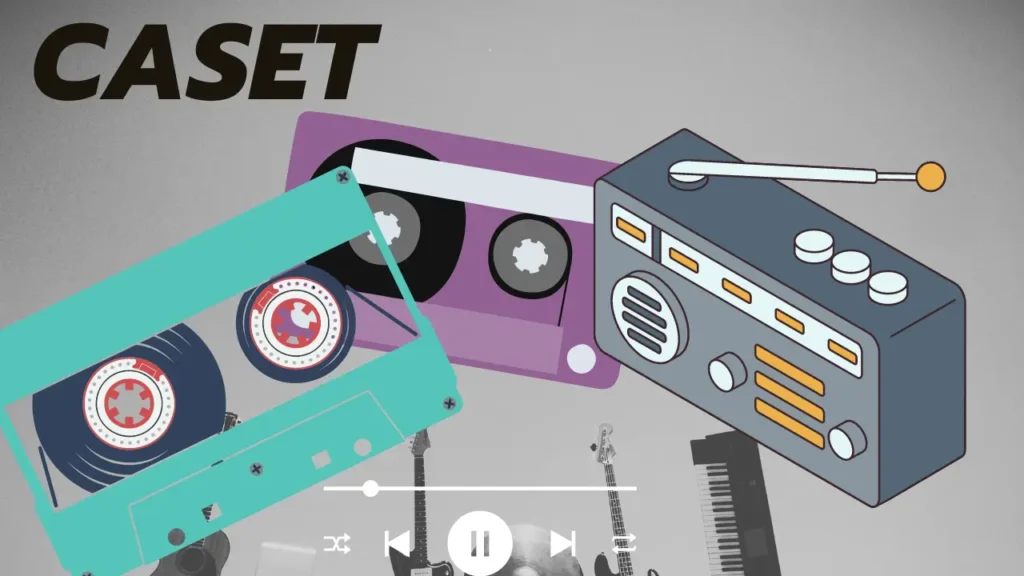
Caset is a term that can mean different things depending on the context, but generally, it refers to a type of tool or system used for organizing, protecting, or categorizing items. In some instances, caset is related to storage solutions like cases or containers designed for specific purposes.
This can include things like mobile phone cases, toolkits, or even specialized cases for musical instruments. Caset helps in keeping items safe, organized, and easily accessible. For example, in a school setting, a caset might be used for storing stationery or classroom materials.
The primary goal of using a caset is to prevent loss or damage to valuable items by providing a dedicated space for them.
Different Types of Caset
Casets come in various types and designs to cater to different needs. Some common types include:
- Phone Casets: Designed to protect phones from scratches, falls, and other damages.
- Tool Casets: Used to store tools in an organized manner, making them easy to find and use.
- Medical Casets: These are used by healthcare professionals to carry medical equipment safely.
- Instrument Casets: Musicians often use these to keep their instruments safe from damage.
- Travel Casets: These are for storing clothes, toiletries, and other travel essentials neatly.
Each type of caset serves a specific function and is tailored to meet the needs of its users. For example, a phone caset not only protects the device but may also add style or provide additional features like card slots. Meanwhile, a tool caset helps mechanics and handymen keep their tools organized, reducing the time spent searching for the right tool.
Why is Caset Important?
Caset plays a crucial role in everyday life by providing an organized way to store and protect items. For example, using a caset for school supplies helps students keep their materials tidy and accessible, reducing the likelihood of losing important items.
Caset also provides peace of mind, knowing that valuable or delicate items are safely stored. In the medical field, caset is essential for keeping tools sterile and ready for use, which can be critical in life-saving situations.
For travelers, a well-organized travel caset can make packing and unpacking easier, helping them keep track of their belongings while on the go.
How to Choose the Right Caset
Choosing the right caset depends on several factors. First, consider what you need the caset for. Are you looking for something to protect your phone, organize tools, or store travel items? Next, think about the size and capacity. A caset should be large enough to hold your items but not so big that it becomes difficult to carry or store. Materials are another important factor.
For example, phone casets made of durable materials like silicone or hard plastic provide better protection against drops. Similarly, a tool caset made of sturdy metal or hard plastic can withstand rough handling. Lastly, consider the design and features. Some casets come with extra compartments, locks, or straps for added convenience and security.
Benefits of Using Caset
Caset offers many benefits, including protection, organization, and convenience. A good caset keeps items safe from damage, whether it’s a phone case that absorbs shock or a tool caset that keeps sharp objects away from children.
Caset also helps with organization by providing dedicated spaces for items, making it easier to find what you need when you need it. This is especially helpful in settings like schools, workshops, or travel where keeping things in order can save time and reduce stress.
Moreover, a well-designed caset can make transporting items easier, whether it’s a travel caset with wheels or a phone caset with a strap for easy carrying.
Pros and Cons of Using Caset
| Pros | Cons |
|---|---|
| Protects items from damage | Some can be bulky or heavy |
| Helps with organization | May require maintenance |
| Adds convenience | Some are expensive |
| Available in various types | Limited to specific uses |
| Can add style | Not all are durable |
Common Uses of Caset
Caset is used in many different scenarios, from daily life to professional settings. In schools, students use casets to store pencils, erasers, and other stationery, helping them keep their desks neat and their supplies within reach.
In households, casets are used to organize everything from sewing kits to first aid supplies. In the workplace, professionals use casets to keep tools, documents, and other work-related items in order. For travelers, casets provide an organized way to pack and carry personal items, making it easier to move through airports and other transit points.
How to Maintain Your Caset
Maintaining your caset is important to ensure it lasts a long time and continues to serve its purpose effectively. For phone casets, regular cleaning with a mild soap solution can keep them looking new and prevent the buildup of dirt and germs.
Tool casets should be checked periodically for any damage, such as broken latches or worn-out compartments, which should be repaired promptly to prevent further issues.
For travel casets, keeping them dry and storing them properly when not in use can help maintain their shape and durability. It’s also a good idea to empty and clean your caset regularly, removing any items that are no longer needed.
Innovations in Caset Design
The design of caset has evolved significantly over the years to meet changing needs and preferences. New materials, such as eco-friendly plastics and reinforced fabrics, are now being used to create more durable and sustainable casets.
Innovations like waterproof and shockproof casets provide additional protection for items, especially in harsh environments. Some phone casets now come with built-in battery packs, providing extra power on the go.
Others feature smart technology, like GPS tracking, so you can always find your caset if it gets lost. The ongoing advancements in caset design aim to provide better functionality and enhanced user experience.
Conclusion: Why Caset Matters in Daily Life
Caset is an essential part of daily life, helping people stay organized and keep their belongings safe. Whether it’s protecting a smartphone, organizing tools, or keeping travel essentials in order, caset offers practical solutions for various needs.
By choosing the right caset and maintaining it properly, you can ensure that your items are well-protected and easy to access whenever you need them. The benefits of using a caset go beyond mere convenience—they provide peace of mind, knowing that your belongings are stored safely and efficiently.
This guide has covered everything from what caset is to the different types, benefits, and how to choose the right one. With this information, you can make informed decisions about which caset best suits your needs, ensuring that you get the most out of this versatile and helpful tool in everyday life.


